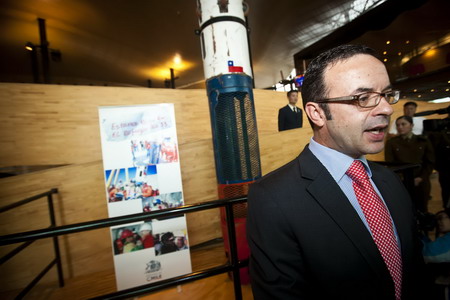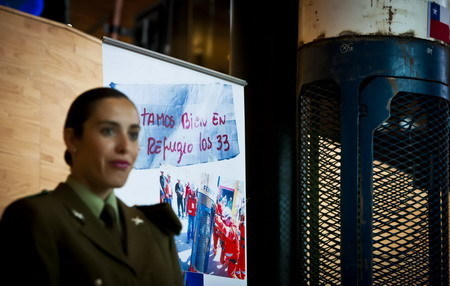Society
Chilean rescue capsule on display at Shanghai Expo
(Xinhua)
Updated: 2010-10-24 10:10
 |
Large Medium Small |
SHANGHAI - The Chilean rescue capsule "Phoenix 1" went on display in the Chile Pavilion at the Shanghai World Expo Saturday, sparking debate about work safety and rescue work in the domestic mining industry.
"The rescue showed respect for life. Mine accidents occur from time to time in China and I hope the Chinese government can learn from the experience," said Xiang Zhengdi, a Shanghai visitor.
Jorge A. Iglesias, managing director of the Chile Pavilion, said Expo is the best place to show the capsule to the world.
"It's very important that the world sees the capsule, the means to rescue successfully 33 of our miners," said Iglesias.
"Phoenix 1" was a backup for "Phoenix 2" which was used to rescue the Chilean miners trapped underground for 69 days.
China is the world's largest coal producer. Its annual output increased from 1.3 billion tons in 2003 to 3.05 billion tons in 2009 while the annual death toll from mine accidents dropped from 7,000 to 2,631 accordingly.
However, Huang Yi, Chief Engineer of the State Administration of Work Safety (SAWS), said more still needed to be done to improve work safety of China's coal mine industry.
Mei Haixing, 59, said although he had visited the Chile Pavilion before, he returned to see the capsule.
"The success of the rescue mostly relied on high-tech facilities, which should be shared with their Chinese counterparts and the rest of the world," Mei said.
A group of engineers also came to see the capsule. Yang Xiaojing, senior engineer of the mine safety product team with the Xi'an Dongfeng Instrument Factory, said his team has been in the development of safety and rescue facility industry for more than three years.
"We came to study it and get some ideas to help our research," said Yang while squatting to examine the details of the capsule.
Yang said, actually besides the capsule, another significant reason for the successful rescue was the emergency shelter where the miners found refuge.
He said emergency shelters are mandatory in many foreign countries and some Chinese companies have been developing lifesaving cabins in accordance with the geological situation in China.
Yang's colleague, senior engineer Bai Jiancheng said their company had developed a kind of emergency lifesaving cabin, which allows 12 people to live in it for 120 hours with oxygen, food, water, and first-aid equipment and it is easily operated as it can be triggered by a single button.
"This kind of facility will give more time for the miners waiting for rescue," Bai said, adding that some 70 percent of the deaths in China's mine accidents are caused by secondary causes, such as suffocation, lack of first-aid equipment, and lack of food and water.
The SAWS and the State Administration of Coal Mine Safety jointly released an announcement late August to urge all coal mines in China to build and improve underground emergency shelter systems by June, 2013.
Lu Yuzhong, a retired local coal mine bureau official, said he hoped China and Chile could share their rescue technology and experience.
Iglesias said if the Chinese authorities were interested, Chile would be pleased to share its experience with China in mine accident rescue.

